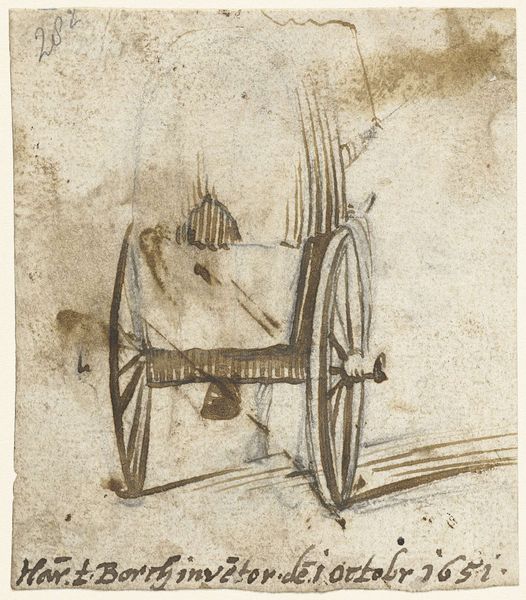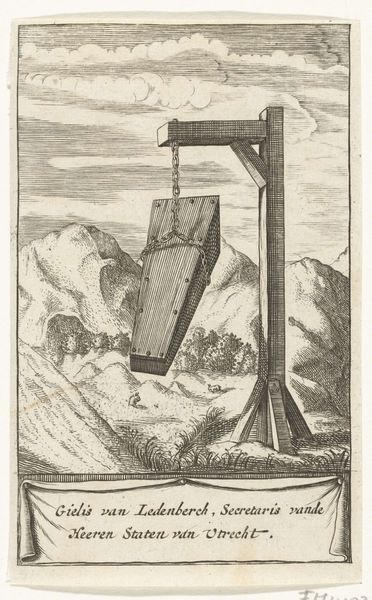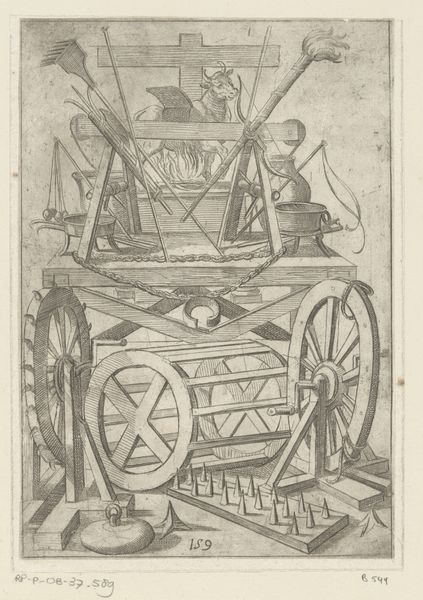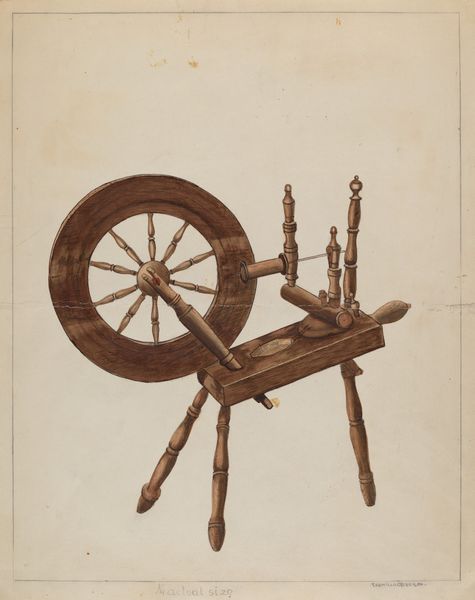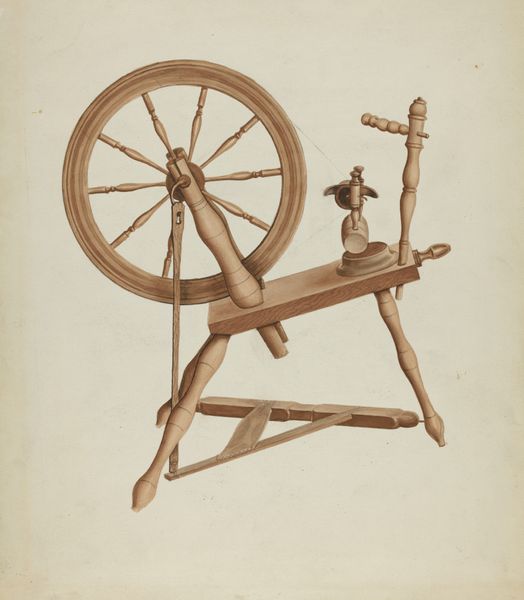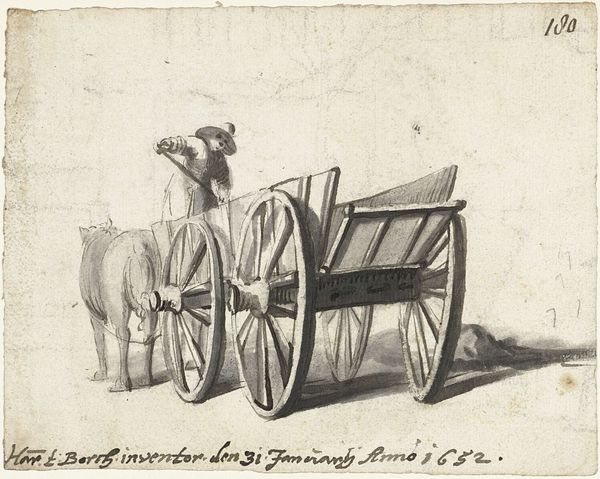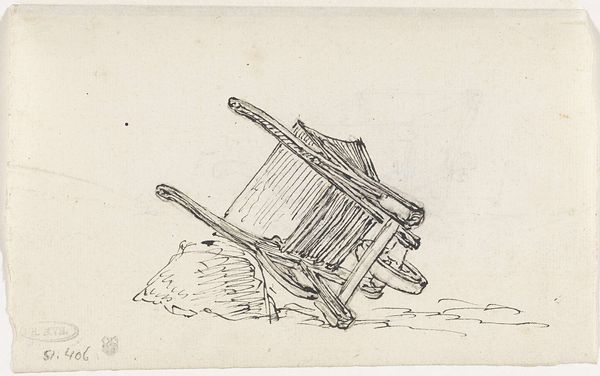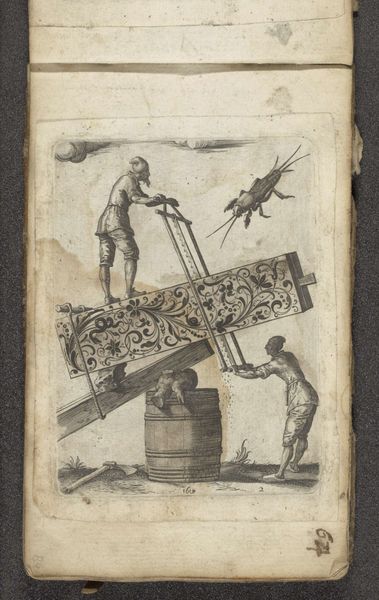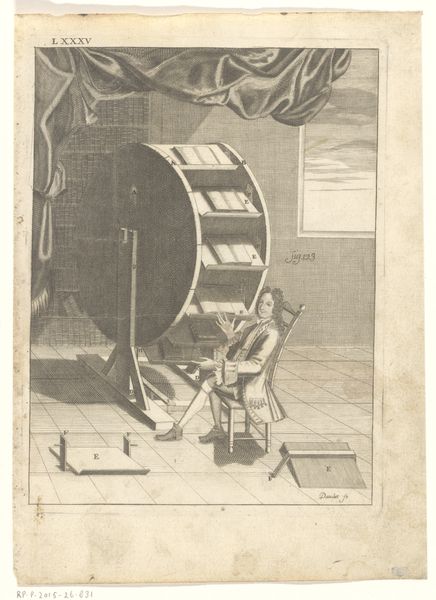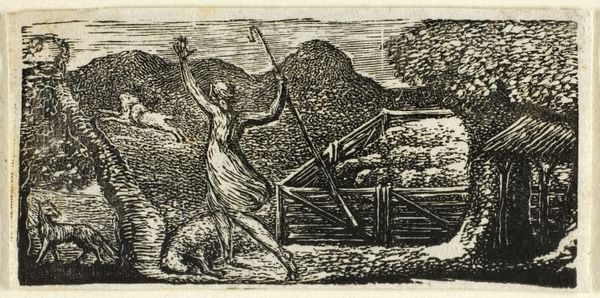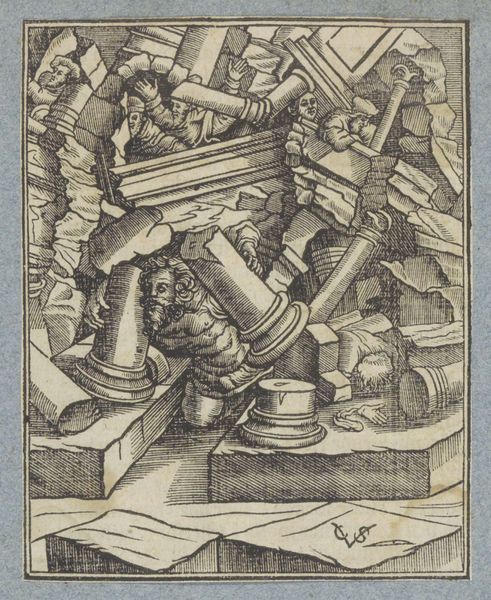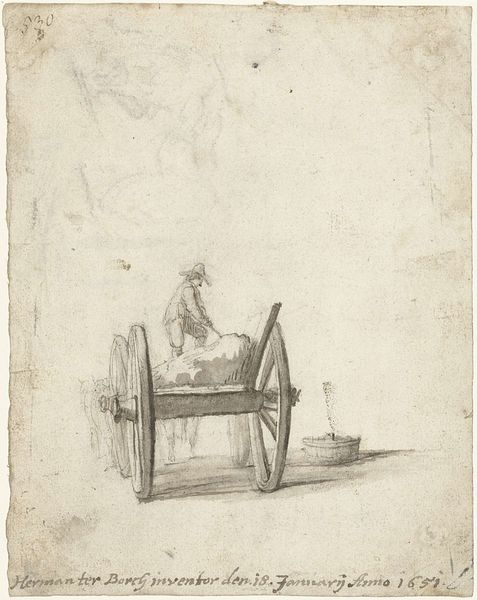
drawing, graphic-art, print, woodcut, engraving
#
drawing
#
graphic-art
#
medieval
# print
#
landscape
#
11_renaissance
#
woodcut
#
pen work
#
genre-painting
#
engraving
Dimensions: 145 mm (height) x 106 mm (width) (bladmaal)
Curator: Today, we're looking at "A Tatar Farm Wagon," a woodcut or engraving made around 1579 by Melchior Lorck. The print currently resides in the Statens Museum for Kunst, in Copenhagen. What are your initial thoughts? Editor: It's striking, in its focus and detail. A very solid, working thing – the wagon, the way the wood is cut, it feels very grounded. I'm drawn to the texture achieved solely through line work. Curator: Lorck was quite a figure, working as an artist and diplomat across Europe. His depictions of Ottoman life and customs provided Europeans with invaluable insight into a world they barely knew. Editor: Right, it makes you wonder about the practical craftsmanship involved. Where was this wagon made, what kinds of wood, how were the different parts connected? Were they standard designs or specialized for different tasks and regions? It is an artifact born from the physical landscape and the necessities of labor. Curator: That’s a great point. Understanding that social function enriches our understanding. Think about how this wagon was central to Tatar agriculture and trade—facilitating not only commerce, but also movement and cultural exchange. It connects directly to historical trade routes. Editor: And Lorck choosing this subject…what did it signify in a time of shifting power dynamics and cultural exchange? To elevate a simple working wagon—it seems charged, not just as documentation, but commentary. What did people back then make of a foreign cart represented this meticulously? Curator: Perhaps it speaks to a growing European curiosity about the East, but seen through the lens of everyday life rather than exoticized fantasies. Or the way imagery started to take the central place of the thing in a European mind. Editor: So, this print not only provides us an early example of detailed ethnographic studies, it also points to a fundamental relationship between raw materials and social development. Food, materials, and this labor, conveyed by art—an incredible connection. Curator: Precisely, seeing the intersections of art, culture, and utility allows us to engage meaningfully with history. It’s a starkly mundane item depicted to reveal a wider world to its European audience. Editor: The more we delve into it, the more the artwork embodies its reality: an exploration and representation that brings together craftsmanship, use, and social reality of past life.
Comments
No comments
Be the first to comment and join the conversation on the ultimate creative platform.
